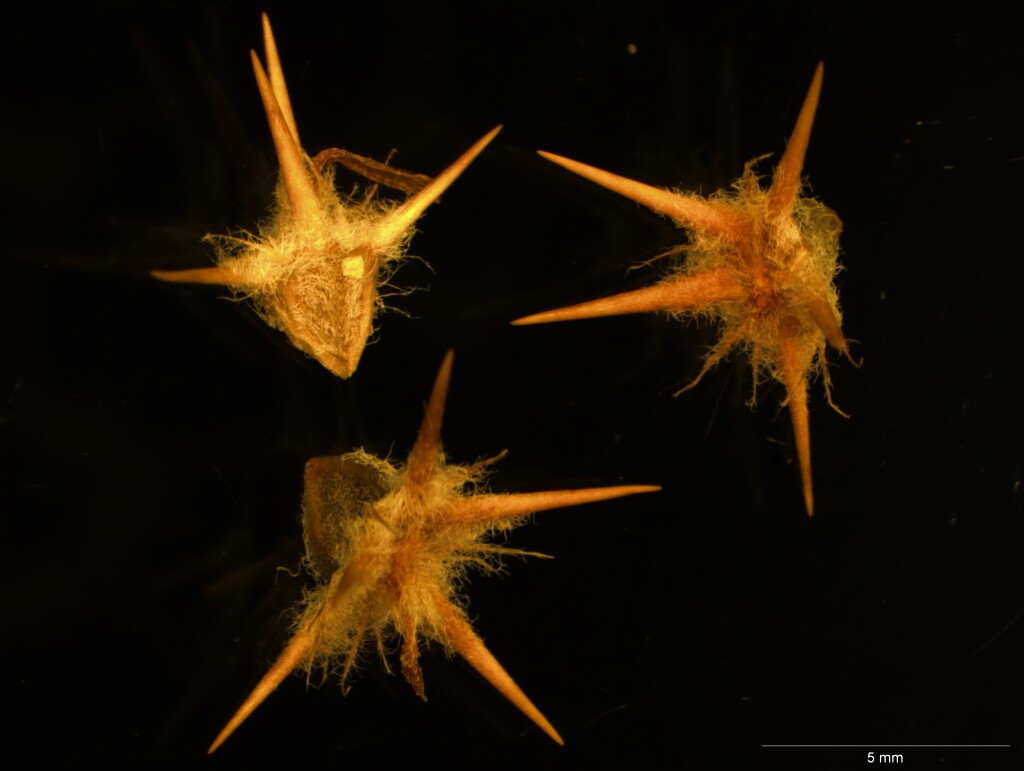Calotis pubescens
(F.Muell. ex Benth.) N.G.Walsh & K.L.McDougall Burr-daisyTufted, rhizomatous, villous perennial to 17 cm high. Basal leaves shortly petiolate, obovate-cuneate, entire or up to 5-toothed distally, sometimes emarginate, 15–50 mm long, 6–12 mm wide; scape leaves smaller (c. 1 cm long) and sessile, but otherwise similar. Scapes unbranched; capitula to ?25 mm diam.; involucral bracts obovate, 3.5–5 mm long; ray florets mauve or white, c. 40, c. 9 mm long; disc florets yellow, sterile. Cypsela body c. 2.5 mm long, reddish-brown, villous at apex; major awns 4 or 5, stout, divergent, 3–5 mm long, villous near base, smooth near apex; secondary awns fine, 3–5 between each pair of major awns, to 1.5 mm long, plumose; a narrow inner ring of fine, erect, plumose awns to c. 1 mm long is present at the apex of the cypsela. Flowers Dec-Jan. (2 records).
HNF, VAlp. also NSW. In Victoria it was known only by the type specimen from ‘grassy mountains on the Mitta Mitta River’ collected in 1854, until rediscovered in 2009 near Cobungra in a subalpine herbfield plain.
Apart from the inner ring of secondary awns, the cypselas are virtually identical to those of C. scabiosifolia var. integrifolia which grows in areas close to the type locality, as well as at the Cobungra locality.
Walsh, N.G. (1999). Calotis. In: Walsh, N.G.; Entwisle, T.J., Flora of Victoria Vol. 4, Cornaceae to Asteraceae, pp. 859–864. Inkata Press, Melbourne.
 Spinning
Spinning
